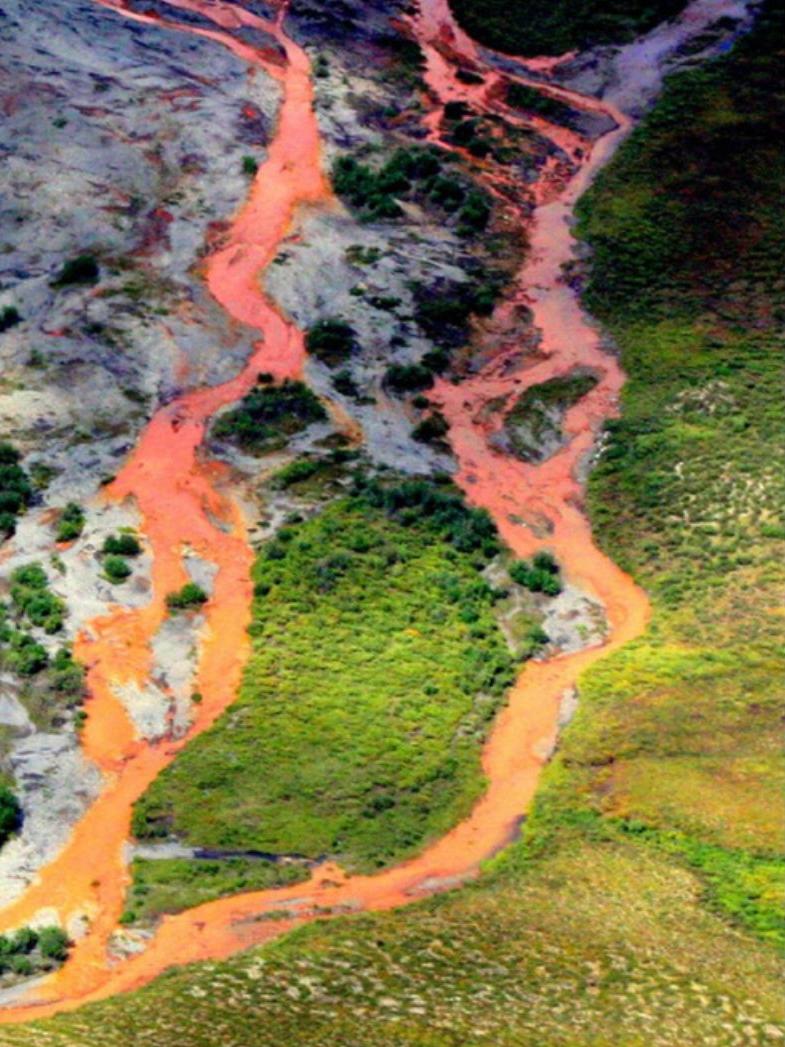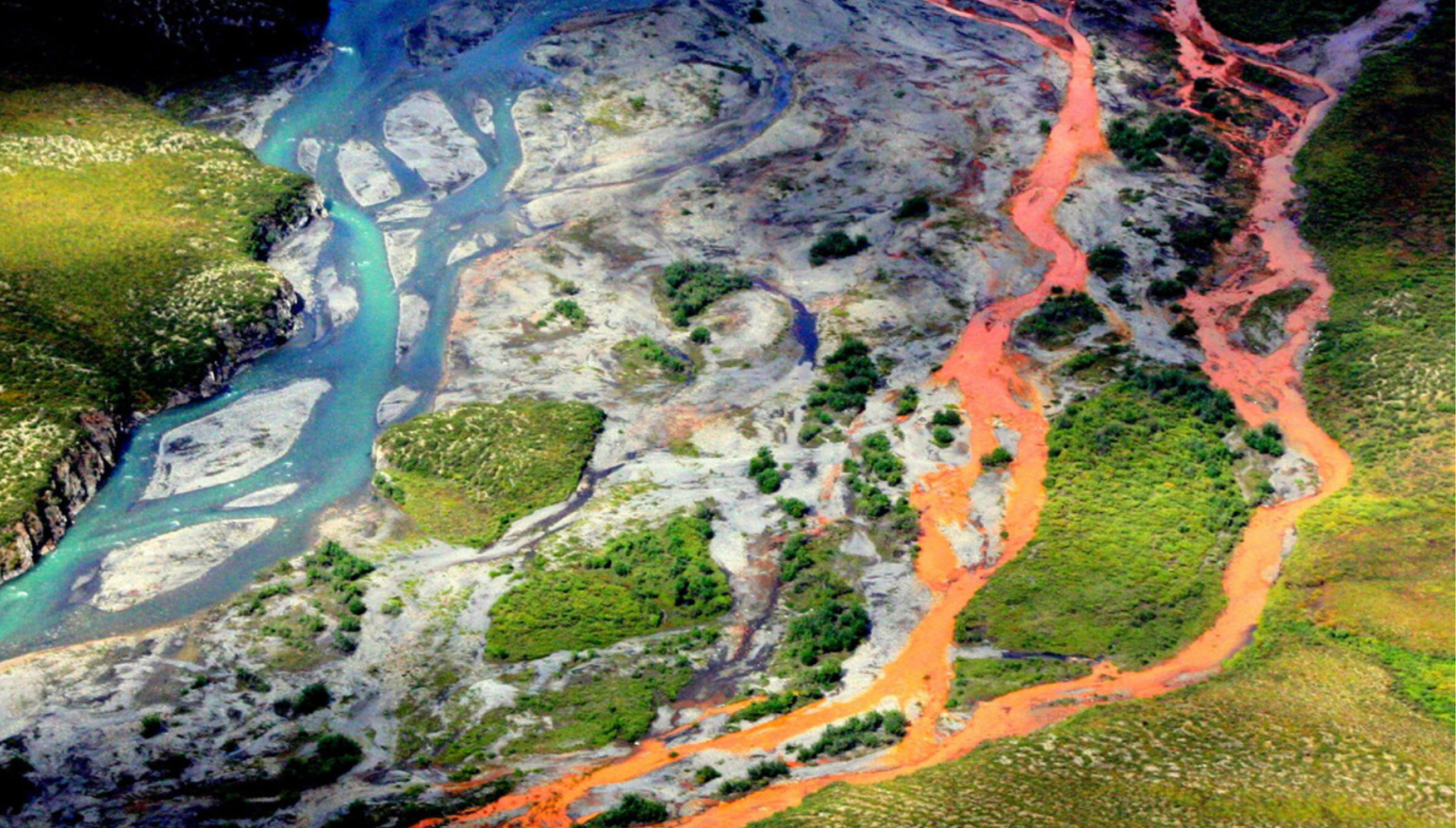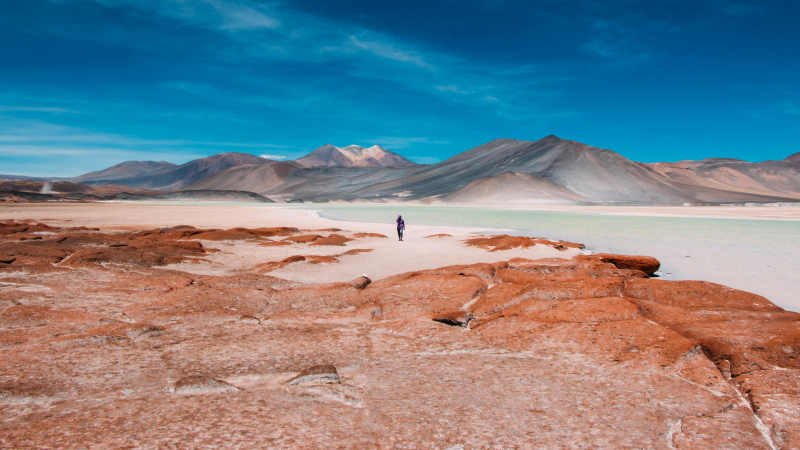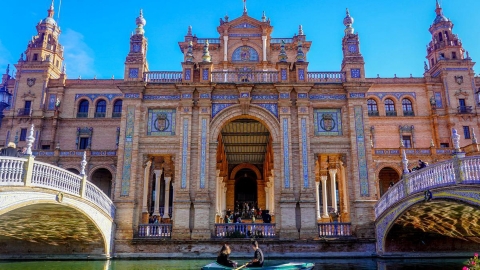The Arctic is the fastest-warming region in the world. Rising temperatures are melting the permafrost, releasing minerals that have been buried in the ice and seeping into rivers, turning them a rusty color.
Melting permafrost exposes minerals locked in the ice to oxygen (a process called weathering). Weathering increases the acidity of water and dissolves metals like zinc, copper, and iron, which are the main reasons rivers turn orange. Weathering not only affects the color of rivers, but also degrades water resources and biodiversity in the Arctic.
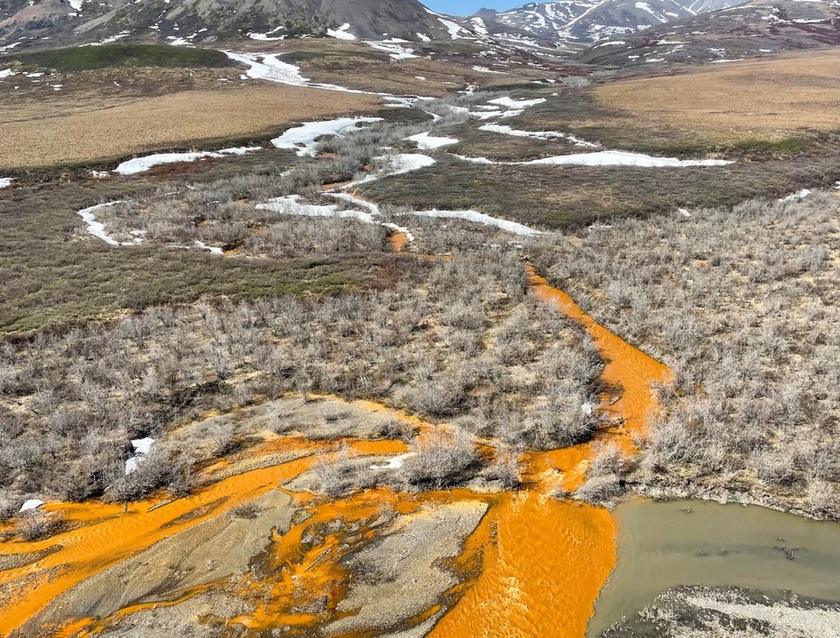
Alaska's ancient major rivers are turning a rusty yellow so clear they can be seen from the air.
Not only is the change visually, the river water here has a high concentration of minerals that are toxic to most aquatic life. Researchers are particularly worried about the negative impact on the natural environment.
Water with high metal levels can be toxic to fish and other aquatic life. Some animals, such as reindeer and moose, depend on these water sources for drinking and survival. Exposure to contaminated water can make them sick and even kill them.

Previously, many predictions that the thousand-year-old permafrost would soon melt caused many disasters.
Although people in Alaska do not directly use this water for drinking, it can affect groundwater and other water sources used for agricultural and industrial activities.
Experts have worked closely with Alaskan authorities and tribes to ensure local people receive accurate and timely information about the phenomenon.
The phenomenon first appeared in 2018 in Alaska, killing two native fish species, the Dolly Varden salmon and the Sculpin catfish. Previously, these rivers were known for their clear water.





